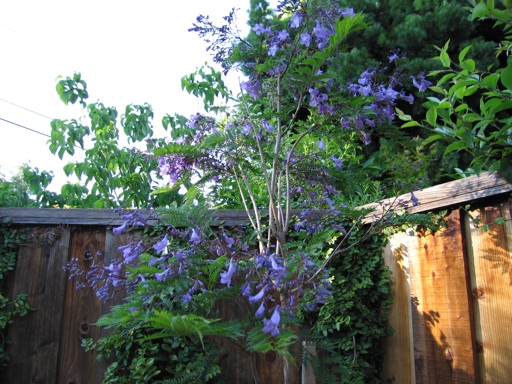
Last year, I planted a jacaranda tree in our backyard. Although jacaranda is sensitive to freezing weather, it survived our winter without any damage and is now blooming already. Last January, the temperature dropped to about 28 degrees F one night. It dropped all of its leaves after that freeze, but it did not lose any of its branches. Right now, it’s just a stick with a few small branches at the top.
Jacaranda trees will eventually grow to an enormous size, 30-40 feet tall and as wide. My plan is to keep our jacaranda tree to under 12 feet tall through regular pruning. I do not want a large tree shading our relatively small yard. But I couldn’t resist planting one because they are so beautiful when they are in bloom. My hope is that it won’t grow too fast, so that maintaining it at a reasonable size will be possible.
June 13 2009 | Jacaranda | Comments Off on New Jacaranda in Bloom
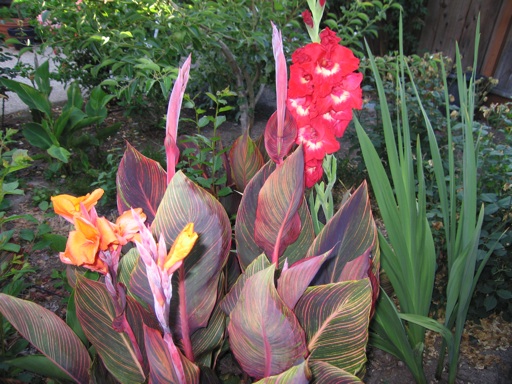
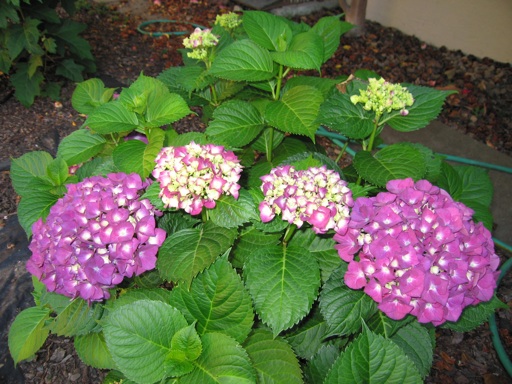
I took these pictures in our yard yesterday. In the first picture, our orange tropicanas are just starting to bloom, and a red gladiola is blooming behind them. The second picture shows one of our hydrangeas just beginning to open.
June 08 2009 | Cannas and Gladiolas and Hydrangeas | Comments Off on June Flowers
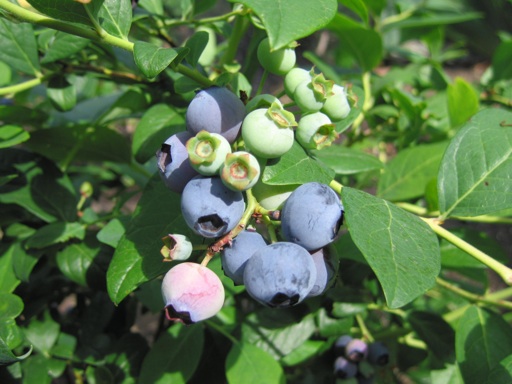
Blueberry season is here in Northern California. I have been growing southern highbush blueberries in the ground in our backyard for about three years now. I am growing the varieties Misty, O’Neal, Southmoon, Jubilee, and Sunshine. The above picture is our O’Neal bush.
Our blueberries have produced berries every year and have grown relatively well. They haven’t grown very fast or very large. They are only about two feet tall and about as wide. That puzzles me, because I have read that these varieties are supposed to reach 6 feet tall, except Sunshine which is a compact variety. I am not sure how long it would take to reach their full height or even if they are capable of doing so in our climate.
I don’t seem to be having a problem with soil pH, even though our soil tested at a pH of about 6.5. Blueberries are supposed to prefer a soil pH of about 5.5. The leaves of all 6 of our bushes look green and healthy, and the blueberries are very tasty. Each bush usually gets 50-100 berries. I have given them a sulfur additive once or twice a year and an occasional treatment of acidic water soluble fertilizer.
The main problem I have had with blueberries is birds eating the berries. The birds have eaten our berries as soon as they begin to turn blue. I have seen birds eating or attempting to eat the berries several times a day.
I have covered each of our bushes with bird netting to try to stop them. At first, the netting didn’t work very well. The birds just crawled under the netting or picked the berries right through the netting. They ate a significant percentage of the berries even with the bird netting covering the bushes. About a week ago, I added extra netting, tucked the netting tightly under each bush, and held the netting to the ground with large rocks. This configuration seems to be working well at keeping them from eating the berries.
The problem is that the berries are hard to pick now. Each time I want to pick the berries I have to go through the trouble of removing the netting from each bush and then recovering each bush well enough so that the birds can’t get in after I am finished.
I am already thinking about devising a better system that perhaps I could implement by next year. It would be much easier to have a wooden frame covered with chicken wire around each bush that could be easily removed and replaced to facilitate harvesting. Maybe I will have them built by next summer.
June 07 2009 | Blueberries | Comments Off on Blueberry Season
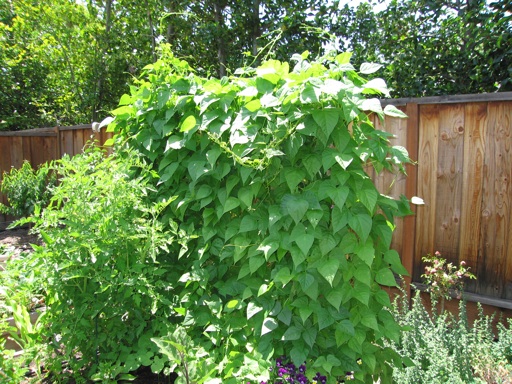
Our pole beans have now completely covered the 5-foot tall wire fence I erected for them last March. I love this fence structure, because it is strong enough to support the weight of the beans. I made the fence using two wooden posts and a steel wire frame that is used for supporting concrete in construction. But perhaps I should have made it taller. The vines are already 8-9 feet long.
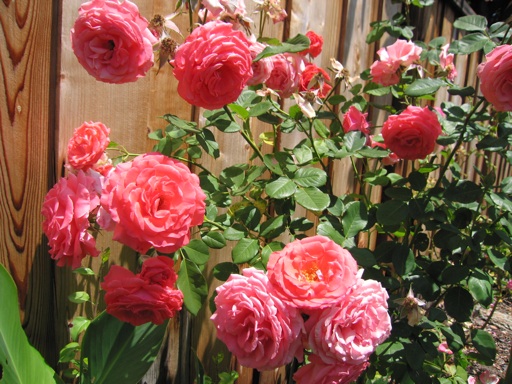
This photograph is a pink climbing rose called America that I planted as a bare root a few years ago. I love this climbing rose. I have planted several climbing roses including Cecil Brunner and Blaze, but this one is my favorite. It has done really well in our yard. It produces lots of beautiful pink flowers, and it has not gotten any black spot or mildew diseases. It grows a moderate amount, but it’s not too vigorous like Cecil Brunner. I got so tried of pruning the numerous long thorny vines of Cecil Brunner, that today I pruned two of ours to the ground, and I plan on uprooting them next weekend.
May 31 2009 | Beans and Roses | Comments Off on Pole Beans and Pink Rose
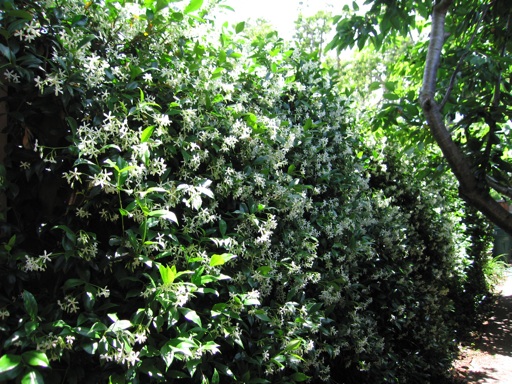
The star jasmine growing up one of our side fences is in full bloom right now. The fragrance of its white star-shaped flowers is exquisite. The flowers have a wonderful sweet smell that pervades the air. We often open the windows near the jasmine fence so we can smell the fragrance from inside the house. The jasmine growing along this fence has 2-inch thick trunks that must be decades old.
Jasmine is a great plant to grow along a fence. However, once jasmine gets established, it grows very fast, like ivy. When we replaced this fence 3 years ago, I cut about 2/3 of the vines off to make way for the new fence. Within two years, it had grown back completely.
Jasmine really needs to be pruned severely every year to keep it in check. Our Jasmine grows quickly up the branches of our nearby cherry tree. After a few years without pruning, it almost completely covered the tree with vines, blocking out most of the light to the tree’s leaves. Now, I cut off most its new growth each fall.
May 31 2009 | Jasmine | Comments Off on Jasmine Fence
« Prev - Next »






